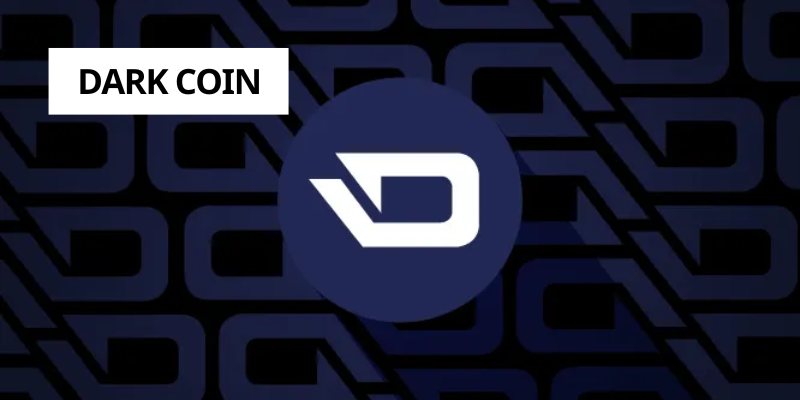What is the Dark Coin?
Contents
What is the Dark Coin?
The question “What is the Dark Coin?” often arises in discussions about privacy-focused cryptocurrencies. Dark Coin, originally launched as Darkcoin in 2014 and later rebranded as Dash (Digital Cash), is a cryptocurrency designed to prioritize user anonymity and transaction security.
Unlike traditional cryptocurrencies like Bitcoin, which operate on transparent blockchains, Dark Coin integrates advanced privacy features to obscure transaction details, making it a preferred choice for users seeking discretion in their financial activities. This article delves into the origins, technology, use cases, and implications of Dark Coin, answering the core question: What is the Dark Coin?
Origins and Evolution
To fully grasp “What is the Dark Coin?”, one must understand its historical context. Dark Coin was created by Evan Duffield to address the privacy limitations of Bitcoin.
Bitcoin’s blockchain, while secure, is pseudonymous, meaning transactions can often be traced back to individuals through sophisticated analysis. Dark Coin introduced a feature called DarkSend (later renamed PrivateSend), which mixes transactions to obscure their origins and destinations. This innovation positioned Dark Coin as a pioneer in the realm of privacy-centric cryptocurrencies.

In 2015, Dark Coin rebranded to Dash to broaden its appeal beyond the dark web and emphasize its utility as a fast, secure alternative to cash. Despite the rebranding, the question “What is the Dark Coin?” persists due to its early association with anonymous transactions and its continued use in privacy-focused applications.
Core Technology: DarkSend and Beyond
At the heart of the answer to “What is the Dark Coin?” lies its groundbreaking technology. Dark Coin’s DarkSend feature employs a mixing process that combines multiple transactions into a single pool, making it nearly impossible to trace individual payments. This is achieved through a network of master nodes—specialized servers that facilitate transaction mixing and enhance network security. Unlike Bitcoin, which relies solely on miners, Dark Coin’s hybrid model of master nodes and miners ensures faster transaction confirmations and greater anonymity.
Additionally, Dark Coin uses an improved proof-of-work algorithm called X11, which is more energy-efficient than Bitcoin’s SHA-256. The X11 algorithm, combined with a collateral system for master nodes, protects the network from malicious actors, ensuring the integrity of anonymous transactions. These technological advancements make Dark Coin a robust answer to the query “What is the Dark Coin?” by highlighting its focus on privacy and efficiency.
Use Cases and Applications
Understanding “What is the Dark Coin?” also involves exploring its practical applications. Dark Coin’s anonymity features have made it a popular choice in scenarios where privacy is paramount. On the dark web, it has been used for transactions involving goods and services, ranging from legal to illicit activities. However, its utility extends beyond the dark web. Dark Coin is increasingly adopted in regions with unstable economies, where individuals seek secure, private alternatives to fiat currencies.
Businesses and individuals also use Dark Coin for remittances, micropayments, and peer-to-peer transactions due to its low fees and fast confirmation times. The rebranding to Dash has further expanded its use in mainstream commerce, with integrations into payment processors and merchant services. By addressing “What is the Dark Coin?” from this perspective, it becomes clear that its value lies in its versatility as both a privacy tool and a practical financial instrument.
Benefits and Challenges
The appeal of Dark Coin, as revealed through the question “What is the Dark Coin?”, stems from its benefits. Its anonymity protects users from surveillance and data breaches, while its decentralized nature ensures resistance to censorship. The speed and affordability of transactions make it a viable alternative to traditional payment systems.
However, Dark Coin faces challenges. Its association with the dark web has drawn scrutiny from regulators, who fear it may facilitate illegal activities such as money laundering or trafficking. While Dark Coin’s developers emphasize its legitimate uses, the stigma persists. Additionally, competing privacy-focused cryptocurrencies like Monero and Zcash pose a threat to its market share. Answering “What is the Dark Coin?” requires acknowledging these challenges alongside its strengths.

Regulatory and Ethical Considerations
The question “What is the Dark Coin?” also invites discussion of its regulatory and ethical implications. Governments worldwide are grappling with how to regulate privacy-focused cryptocurrencies. In some jurisdictions, Dark Coin’s anonymity features have raised concerns about compliance with anti-money laundering (AML) and know-your-customer (KYC) regulations. This has led to calls for stricter oversight of cryptocurrency exchanges and wallets.
Ethically, Dark Coin presents a dual-edged sword. Its privacy features empower individuals to protect their financial autonomy, particularly in oppressive regimes. Conversely, they can be exploited by bad actors. The ongoing debate about balancing privacy and accountability shapes the narrative around “What is the Dark Coin?” and its role in the global financial ecosystem.
The Future of Dark Coin
Looking ahead, “What is the Dark Coin?” evolves into a question about its future. As Dash, Dark Coin continues to innovate, with plans to enhance scalability and user experience through features like Dash Platform, a decentralized application layer. Its focus on usability and accessibility positions it to compete with both traditional payment systems and other cryptocurrencies.
However, regulatory pressures and technological competition will shape its trajectory. The success of Dark Coin will depend on its ability to maintain user trust while navigating a complex legal landscape. For those asking “What is the Dark Coin?”, the answer lies in its potential to redefine financial privacy in an increasingly digital world.
Conclusion
In conclusion, answering “What is the Dark Coin?” reveals a cryptocurrency that blends cutting-edge technology with a commitment to user privacy. From its origins as Darkcoin to its evolution into Dash, Dark Coin has carved a niche in the cryptocurrency market through its DarkSend feature, efficient algorithms, and versatile applications. While challenges like regulatory scrutiny and competition persist, its benefits—speed, affordability, and anonymity—make it a compelling choice for users worldwide. As the cryptocurrency landscape evolves, Dark Coin remains a testament to the power of innovation in addressing the demand for financial privacy.